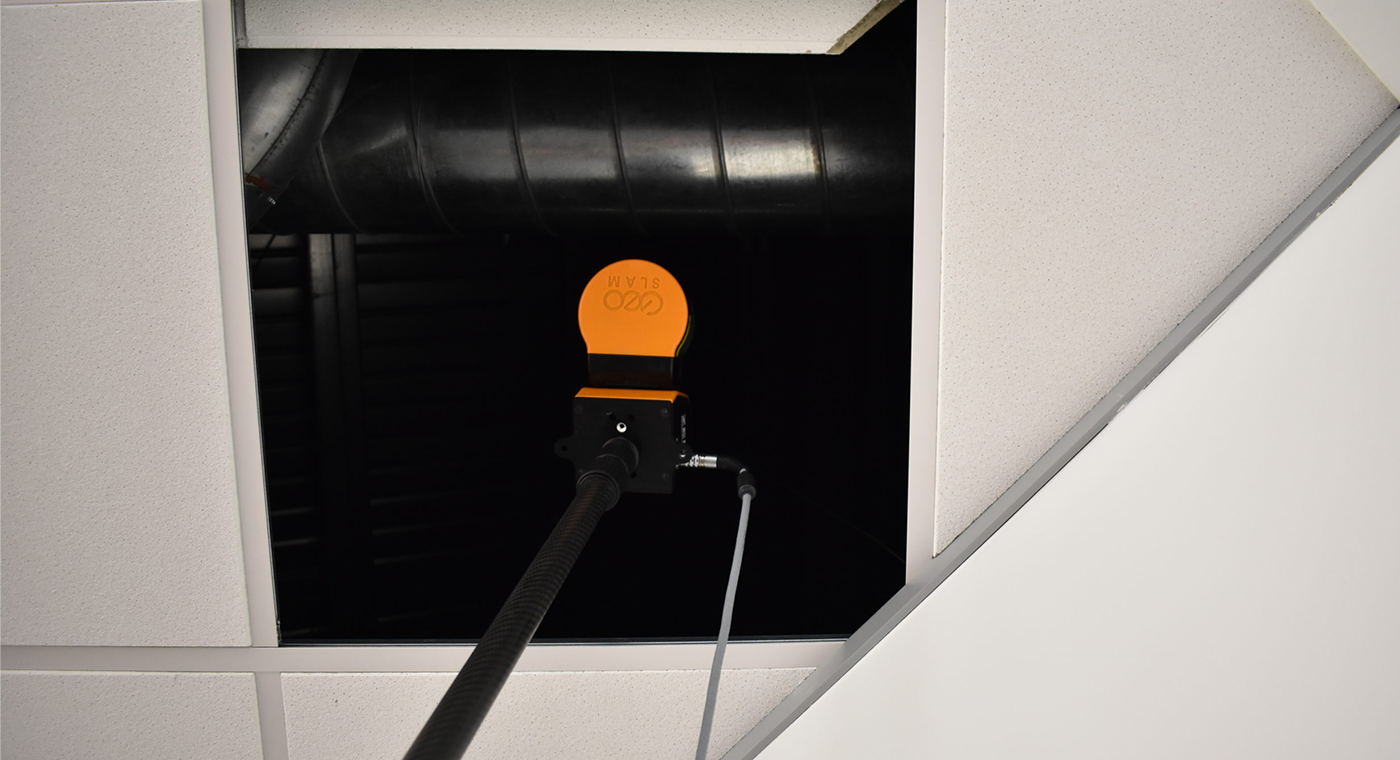When surveying a building, accessing hard-to-reach areas like dropped ceilings or raised floors, without disrupting business can be a challenge. Over the years surveyors have added new technologies to their toolkit, to improve workflow and to cost-effectively tackle these issues. From the use of distometers to terrestrial laser scanning, measuring large areas has become easier, faster, and more accurate. However, capturing difficult-to-reach spaces can still be a disruptive, costly, and extensive process.
This blog will discuss how mobile mapping technology has made scanning behind dropped ceilings a simpler process.
What Is a Dropped Ceiling?
If you've visited a modern-day office space, hospital, school or retail unit recently, you'll have likely stood beneath a dropped ceiling. The goal of a dropped ceiling is to add aesthetic appeal and value to a room, and they have been commonplace for over 800 years.
They are a secondary ceiling below the main structural ceiling. Though dropped ceilings are in most commercial buildings, they're recognizable for their grid-tiled design in professional spaces like offices. They cover industrious parts of a structure like air conditioning, pipes and electrics.
The easily removable tiles make for quick access to the main structure of a building, for repairs or general maintenance of lights, air conditioning or electrics.
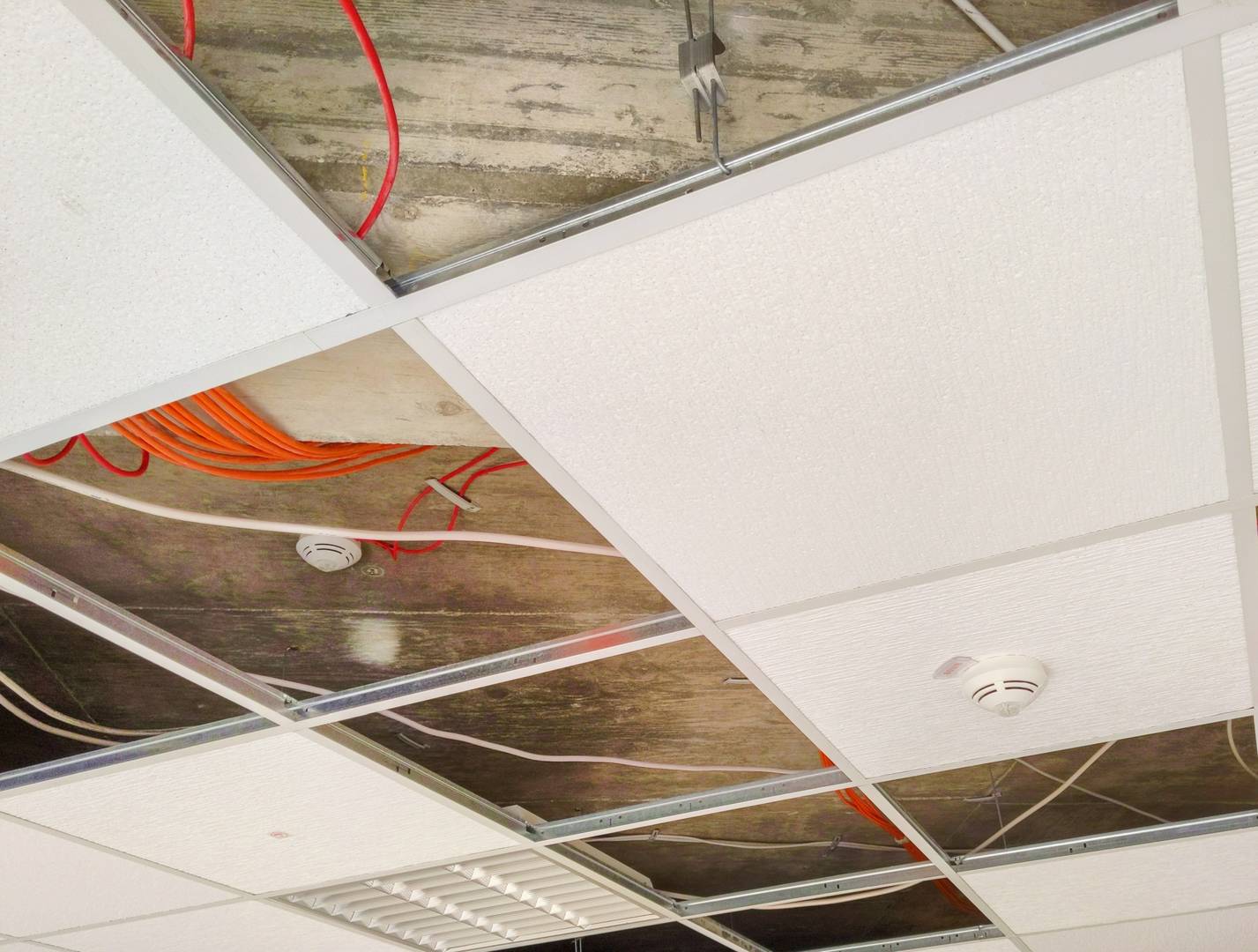
Looking behind a Dropped Ceiling
There are several reasons a surveyor needs to review data from behind a dropped ceiling. Often to reach these you need to remove the dropped ceiling or manually inspect behind ceiling tiles. Both options have the potential to be disruptive and more refined methods would make inspections less hazardous.
Here are a few reasons a surveyor would want to inspect behind a dropped ceiling:
- Fire Risk Surveys
- Architectural Changes
- Structural Integrity
Compartmentation surveys often require comprehensive inspections in difficult-to-access spaces, like ceiling voids, to assess a building's passive fire protection.
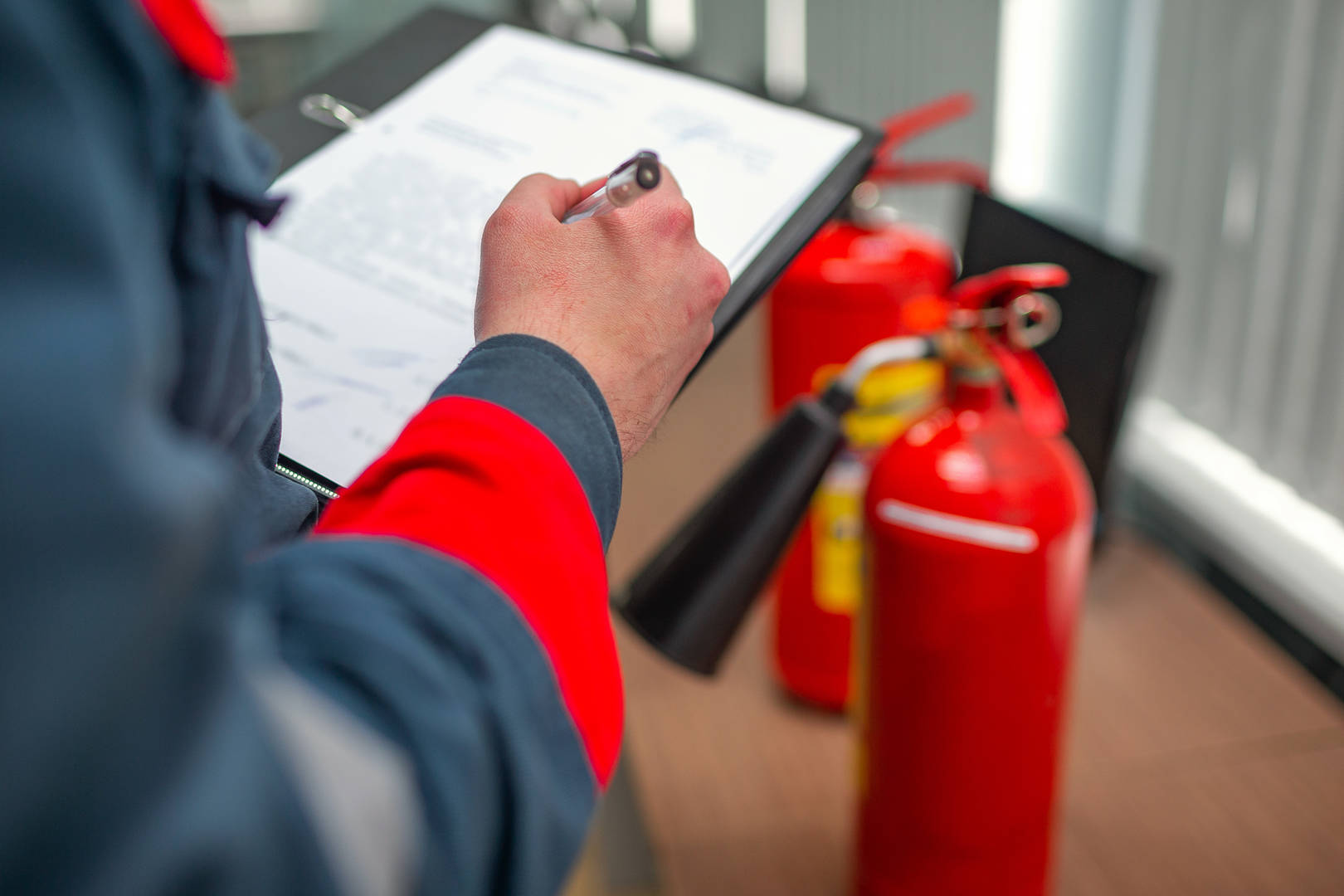
When a business wants to extend its office space, they are likely to need a detailed and accurate review of what is behind a dropped ceiling, whether that's air conditioning units, electrics or general pipework.
A surveyor may require inspecting the structural integrity of the ceiling above the dropped ceiling, including the supports and hangers that hold it in place. This can help identify potential hazards or concerns.

How Mobile LiDAR Is an Efficient Solution to This Problem
Mobile LiDAR is becoming more of a common tool for surveyors. Among other benefits, mobile LiDAR scanners are a positive solution for data capture behind a dropped ceiling for the following reasons:
- Non-invasive: Mobile LiDAR is non-invasive, which means it doesn't require physical access to the area behind a dropped ceiling. This saves time, resources and limits risks of damaging the ceiling or parts behind the ceiling, due to the reduced number of tiles needed to be removed.
- Rapid scanning: Unlike traditional methods of surveying, mobile LiDAR scanners provide a much faster way to capture data. Speed of capture reduces surveying time, is less disruptive and is cost-effective.
- Level of detail: Though static scanning methods provide much denser point clouds, mobile LiDAR scanners can still capture highly detailed 3D data. Mobile LiDAR's level of detail is sufficient to identify hazards, defects or maintenance needs. Combining both TLS data with mobile mapping data is a great way for a surveyor to gain all the information needed, at a much greater speed.
- Local processing: Processing mobile LiDAR data is simple and quick, allowing for a review of the data before the surveyor leaves the site. In some cases, mobile scanners have a real-time preview or real-time processing, providing greater visibility of the captured data.
How Mobile LiDAR Solutions Helped Turner Construction
Turner Construction needed to carry out a revamp and extension of its Atlanta office. They chose to use a mobile LiDAR scanner to map behind the dropped ceilings. No 3D model existed of the above-ceiling conditions. The team needed a fast and non-disruptive method of data capture.
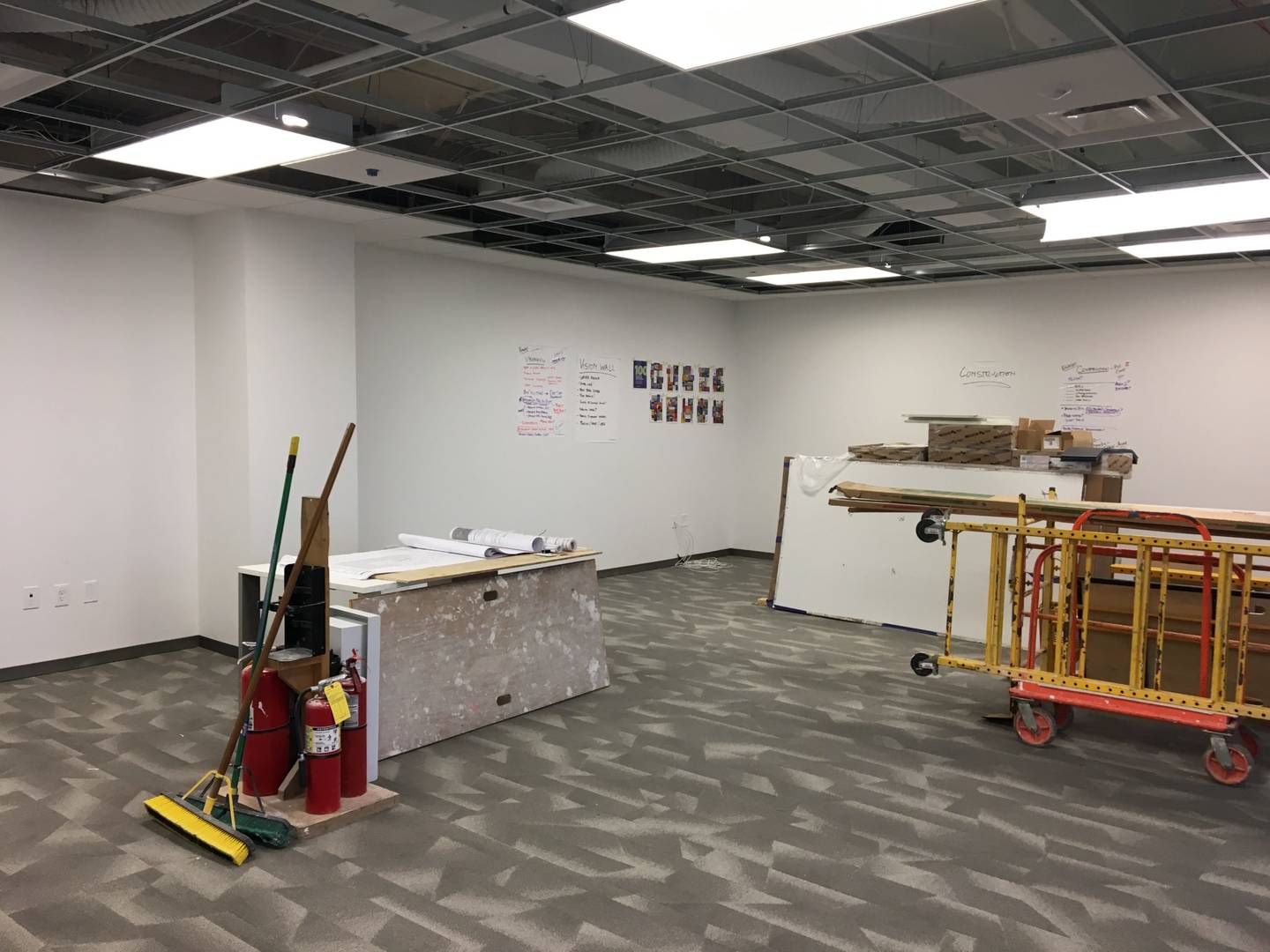
Deploying a SLAM scanner on an extendable pole, the team easily mapped the ceiling void from the ground.
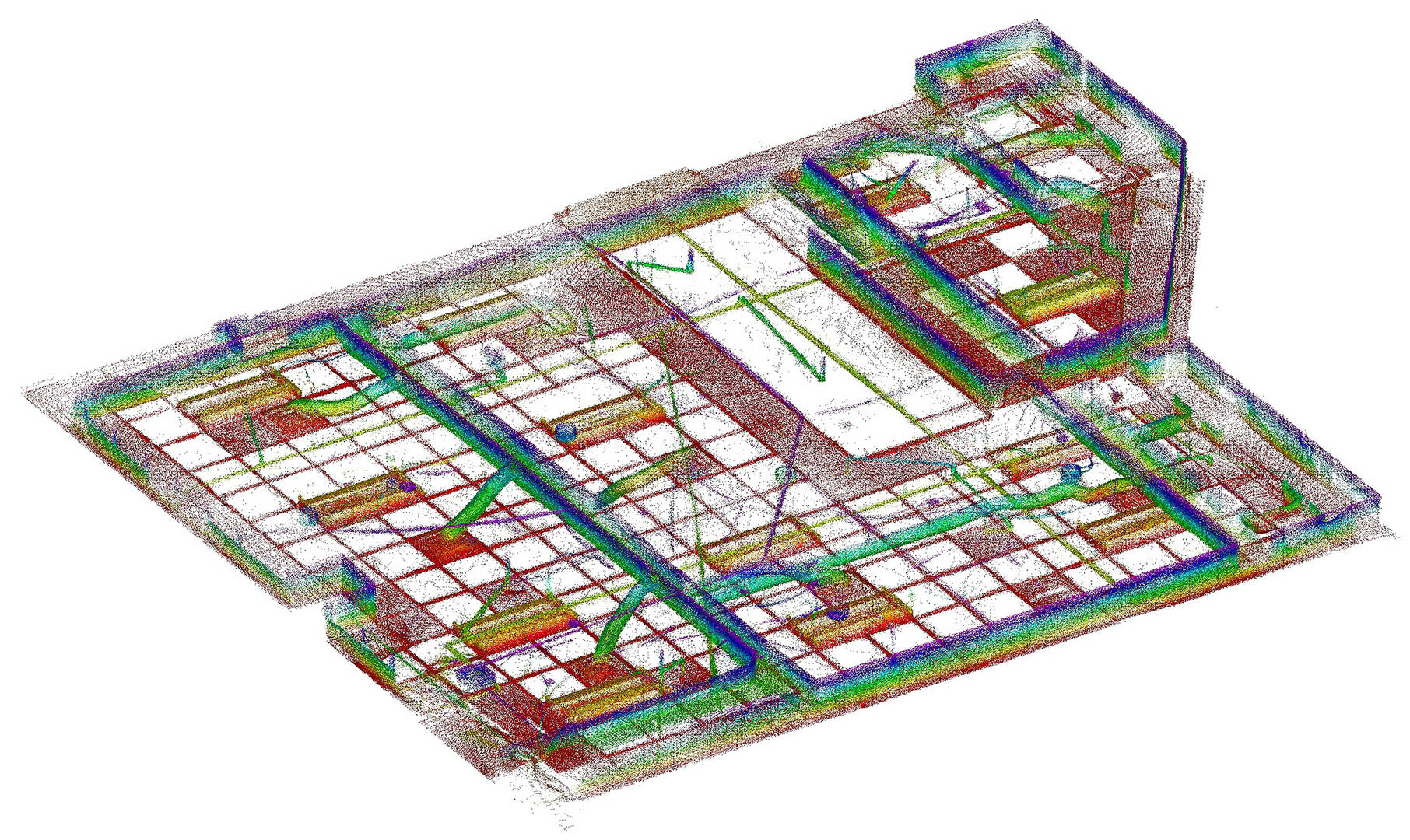
“The mobility of the SLAM scanner allowed us to eliminate almost all occlusions which saved time on the modeling because we had a complete picture instead of having to interpolate between shadows that are usually seen in terrestrial scanning.”
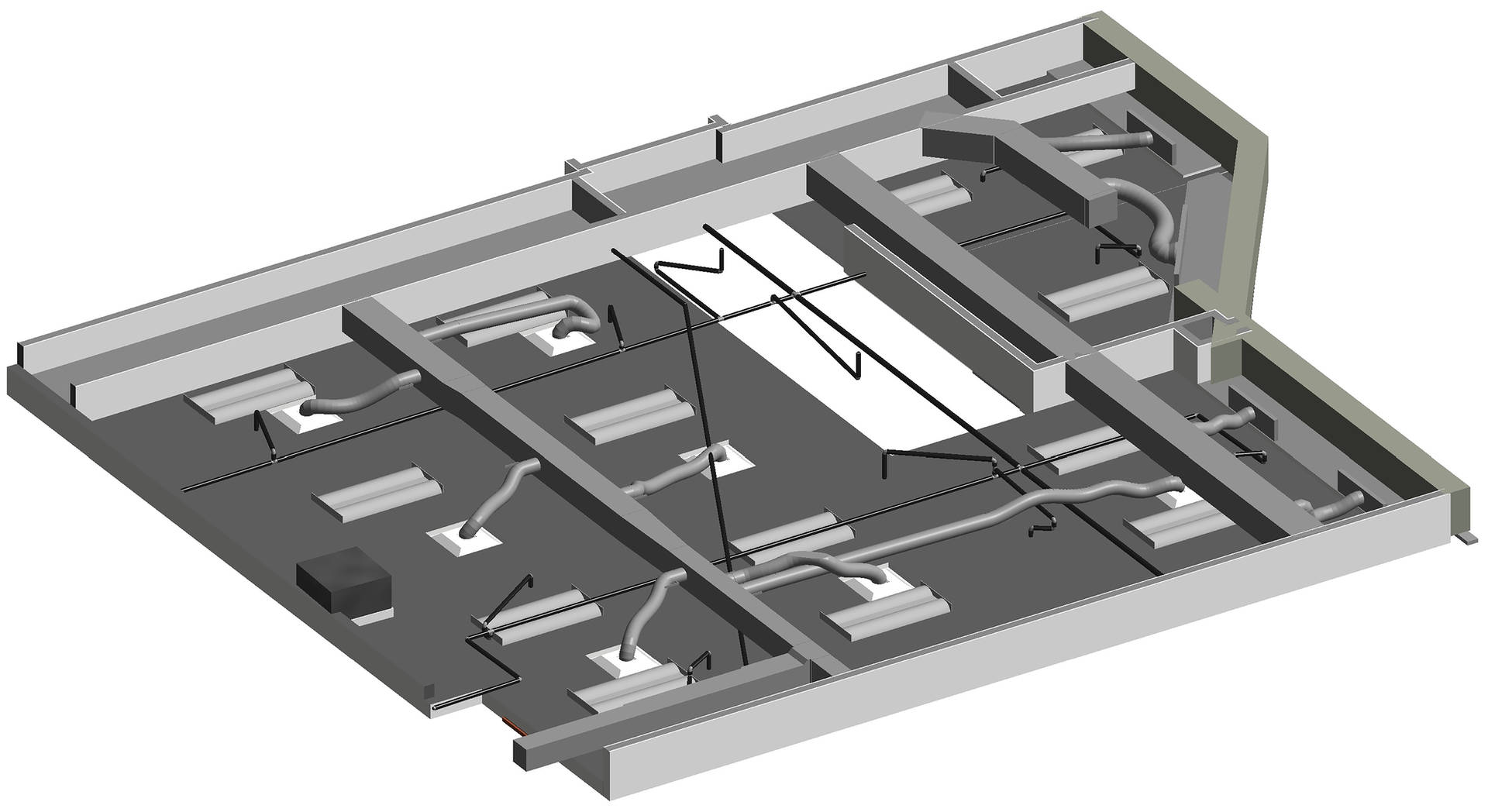
Traditional techniques would have taken over eight hours to complete, however, the SLAM solution only took 10 minutes. The relative accuracy of surfaces was sufficient for BIM.
Why Choose SLAM?
The development of SLAM hardware had speed, accuracy, and ease of use in mind. Easy solutions for previously difficult jobs. Combined with data from static scanners, SLAM solutions provide a complete 3D picture of a surveyed area, in parts of a building previously unobtainable or difficult to reach. Surveying companies that have adopted SLAM can see the benefits in their workflows and companies in need of a survey are being provided with a less disruptive way of capturing the data needed when SLAM is employed.
